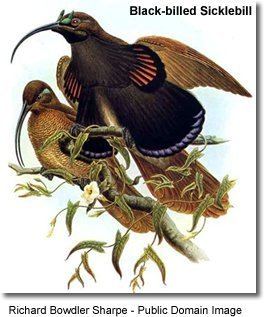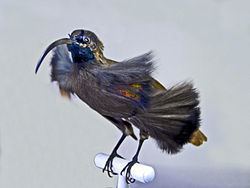Order Passeriformes Higher classification Drepanornis | Phylum Chordata Family Paradisaeidae Scientific name Drepanornis albertisi Rank Species | |
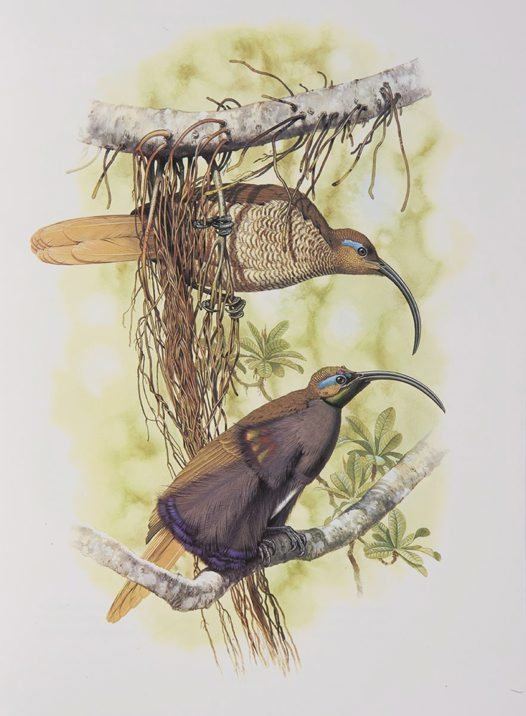 | ||
Similar Pale‑billed sicklebill, Epimachus, Long‑tailed paradigalla, Crinkle‑collared manucode, Glossy‑mantled manucode | ||
Black billed sicklebill
The black-billed sicklebill (Drepanornis albertiti), also known as buff-tailed sicklebill (leading to easy confusion with the hermit hummingbird Eutoxeres condamini), is a species of bird-of-paradise.
Contents
- Black billed sicklebill
- Conservation status
- Etymology
- Subspecies
- Description
- Biology
- Distribution
- References
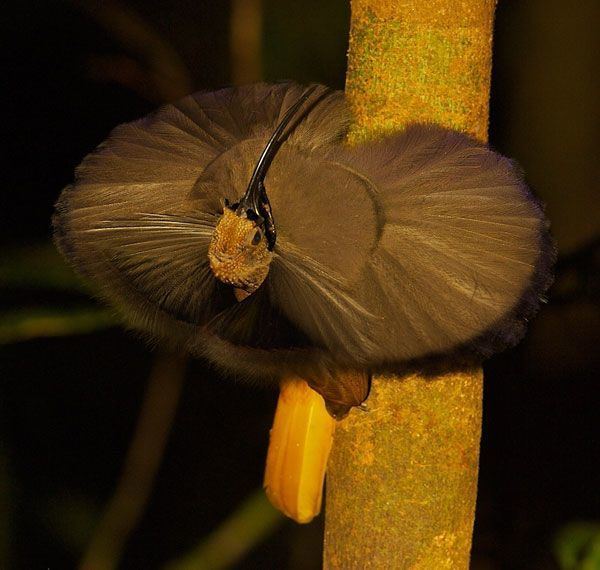
Black billed sicklebill
Conservation status

Widespread throughout its large range, the black-billed sicklebill is evaluated as Least Concern on the IUCN Red List of Threatened Species. It is listed on Appendix II of CITES.
Etymology
The scientific name commemorates the Italian naturalist Luigi Maria d'Albertis, who discovered this species in 1872.
Subspecies
Description
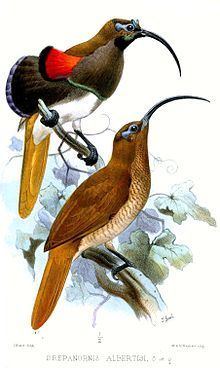
The black-billed sicklebill is medium-sized, about 35 cm long, brown. The male has a bare maroon grey skin around its eye, buff colored tail, dark brown iris, yellow mouth and black sickle-like bill. It is adorned with dark horn-like forecrown feathers, an erectile fan-like bronze neck plumes and elongated purple-tipped flank plumes. Unadorned brown female is smaller with bill longer than male and dark barred below.
Biology
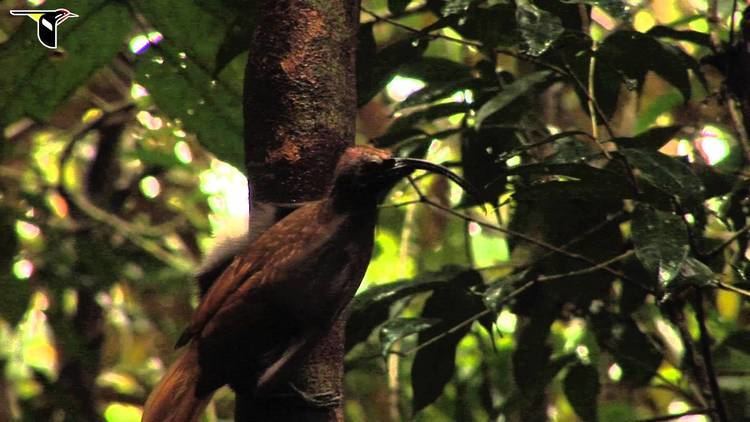
Its diet consists mainly of fruit and arthropods. The female lays one to two pale cream eggs with brown and grey spots.
Distribution
The black-billed sicklebill is distributed to mountain forests of New Guinea. It is not endangered
